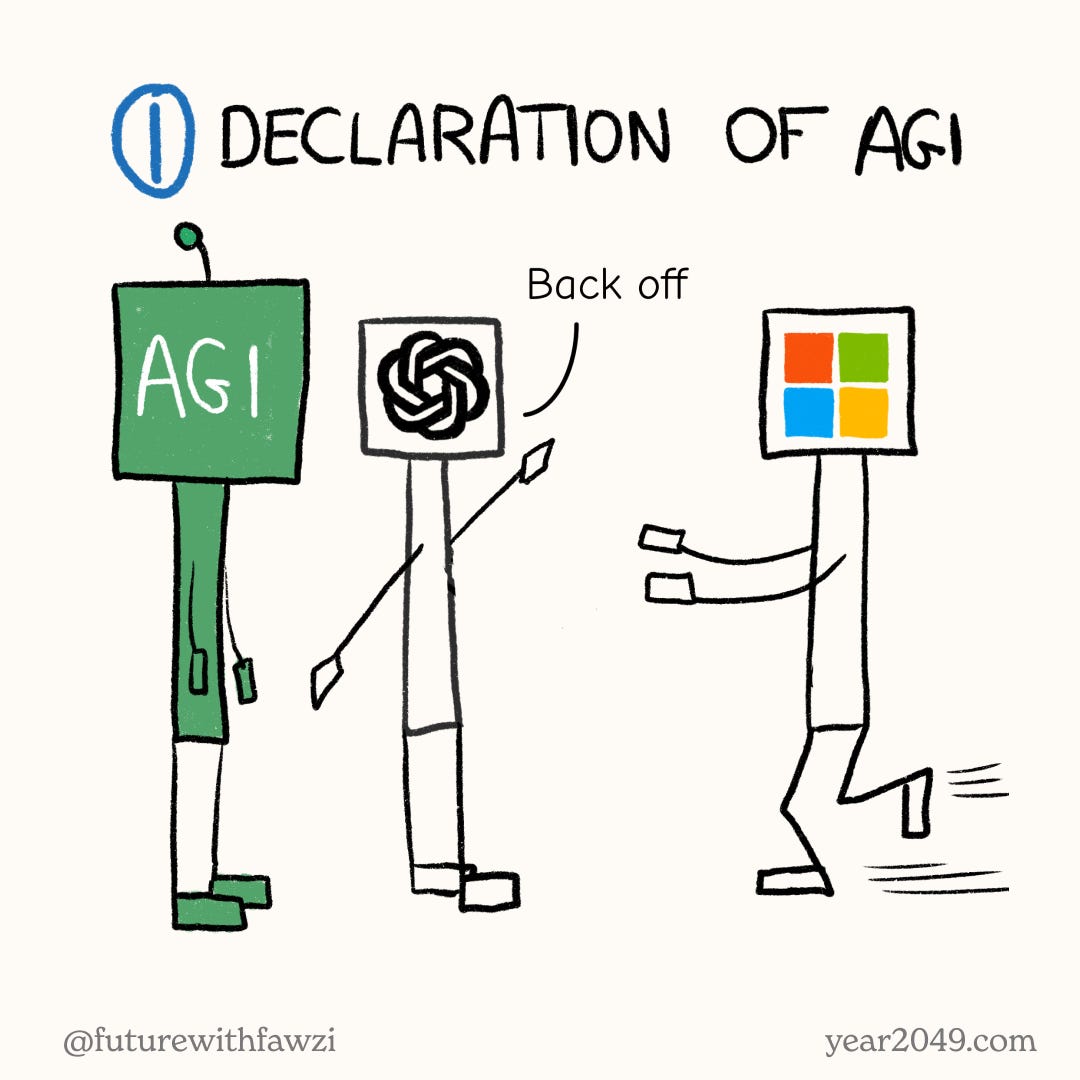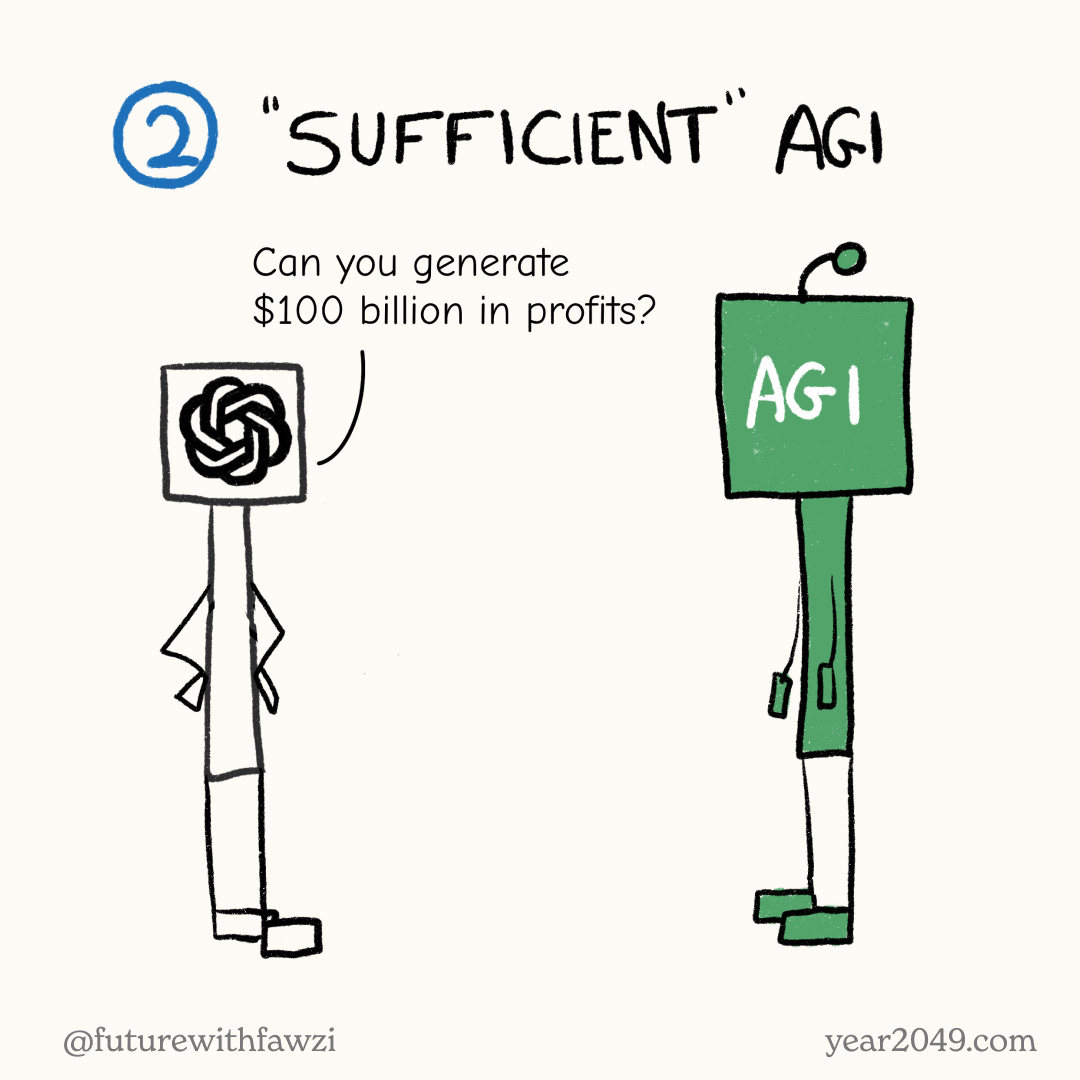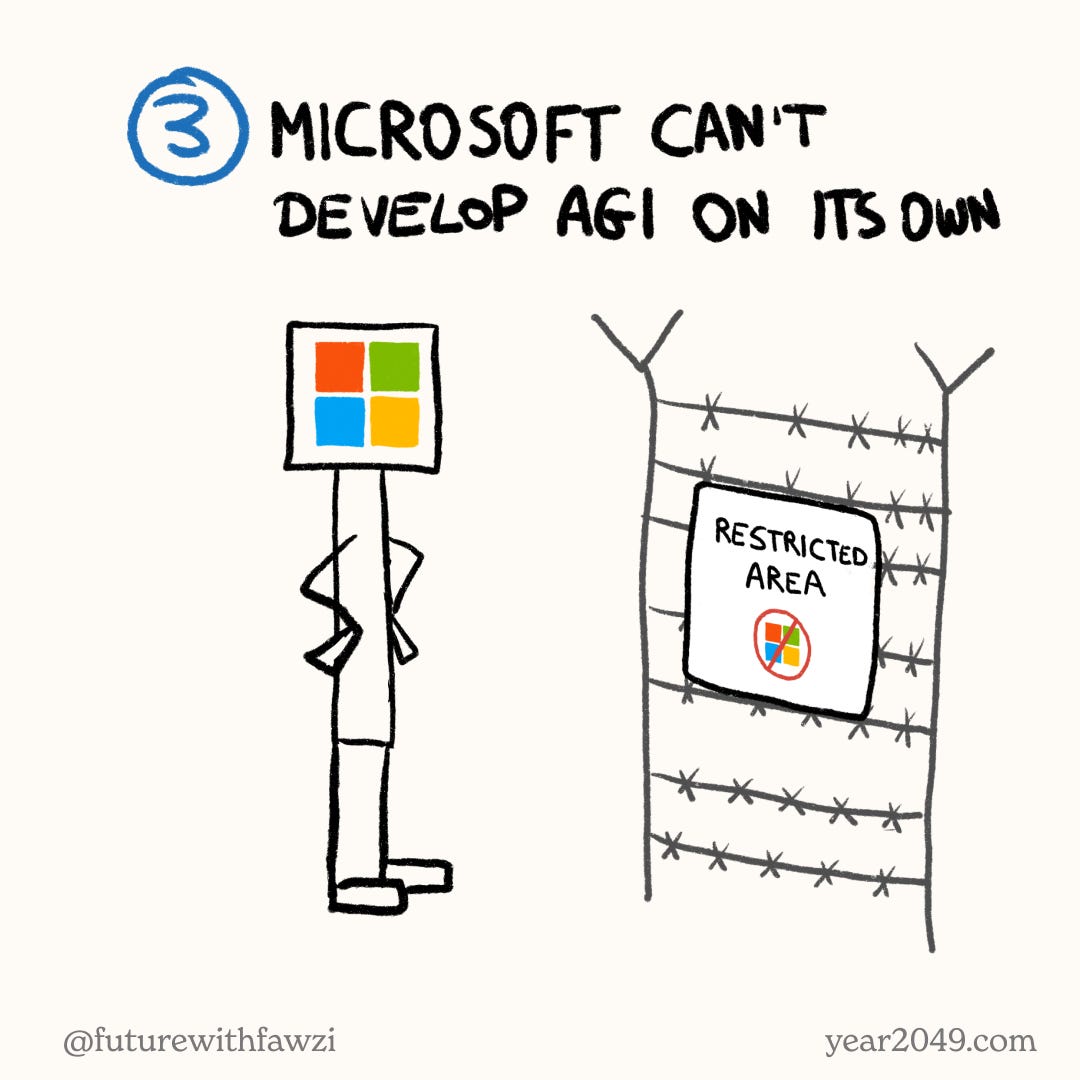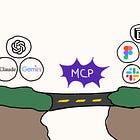The AGI Clause, explained
Why OpenAI and Microsoft are clashing over a contract clause that could transform the future (and their revenue)
Hey friends,
OpenAI and Microsoft are fighting over an AGI clause in their agreement that could shape the future of AI and its impact on the world. Let’s talk about it.
Enjoy,
– Fawzi
Why OpenAI and Microsoft got married in the first place
When OpenAI was founded in 2015 as a non-profit AI research lab, its mission was clear:
“OpenAI’s mission is to ensure that artificial general intelligence (AGI)—by which we mean highly autonomous systems that outperform humans at most economically valuable work—benefits all of humanity.” (OpenAI Charter)
OpenAI transitioned to a capped for-profit structure in 2019 to attract investors. Developing AGI would require an unimaginable amount of money and resources, and the non-profit path wasn’t attractive to raise the funds needed. On top of that, they had to compete with other AI labs like DeepMind who had access to Google’s deep pockets and were making significant strides in their research.
The capped for-profit helped with two things, it:
Allowed OpenAI to raise money from investors while putting a limit on their return, which some sources state as 100x their initial investment. So if you invest $1 million, your return is capped at $100 million and the rest goes to the non-profit arm.
Kept OpenAI under the control of the non-profit arm and board to ensure they don’t deviate from their original mission.
Microsoft invested $1 billion and became OpenAI’s exclusive partner, and it was a win-win for both. Microsoft would provide OpenAI the computing infrastructure to develop AGI, while also gaining exclusive access to whatever technology they developed to integrate it into Microsoft’s suite of applications. Both companies would also collaborate on research and knowledge sharing.
As part of their initial 2019 deal, OpenAI pushed to add an “AGI clause” which gave them the right to block Microsoft from accessing their technology if they ever reached AGI. It was meant to prevent a big tech behemoth like Microsoft from having exclusive access to the most advanced AI if it were developed, which would go against the founding mission of AGI benefitting “all of humanity”.
Basically, OpenAI could just cut off Microsoft’s access to their tech if they simply declared that they reached AGI.
As of today, Microsoft has invested at least $13 billion into OpenAI, and has exclusive access to their technology until 2030. Microsoft also gets a 20% share of any of OpenAI’s revenue (even when the company isn’t profitable) up to ~$100 billion.
The 3-part AGI clause
When the AGI clause was initially added in 2019, OpenAI was still a quiet research lab and AGI felt like a distant fever dream. Microsoft was willing to make that concession because they would still get a lot of value from commercializing OpenAI’s technology and not falling behind Google until AGI was reached.
The AGI clauses have evolved over the years, but here are the three important parts to understand:
#1: The original AGI milestone
The original AGI clause gives OpenAI the right to prevent Microsoft from getting access to their latest models once they reach AGI. This milestone would be determined and agreed upon by OpenAI’s board alone.
From their organizational structure document:
“[…] the board determines when we've attained AGI. Again, by AGI we mean a highly autonomous system that outperforms humans at most economically valuable work. Such a system is excluded from IP licenses and other commercial terms with Microsoft, which only apply to pre-AGI technology.”
You can see why Microsoft hates this clause since they have no control over it and OpenAI could use this as an excuse to cut them off from their most advanced tech.
#2: The “sufficient AGI” clause
Another clause was added regarding a “sufficient AGI” benchmark.
This clause states that if OpenAI can demonstrate that its model can generate $100 billion in profits, it can end Microsoft’s exclusive access to their technology. Unlike the first clause that only prevents Microsoft from accessing post-AGI models, this one revokes all exclusivity.
This would allow OpenAI to strike deals with other cloud providers such as Google and Amazon, who currently can’t distribute OpenAI’s technology through their cloud services.
However, Microsoft and external experts would play a role in defining and validating this benchmark.
#3: Microsoft isn’t allowed to pursue AGI on its own or with other partners
Finally, Microsoft isn’t allowed to develop AGI on its own or with any third parties until 2030, when their exclusivity deal with OpenAI expires.
An important part of the OpenAI-Microsoft deal is knowledge sharing and collaboration between their research labs. OpenAI doesn't want Microsoft going rogue with its proprietary research and potentially beating it to the AGI milestone.
AGI and the definition nobody can agree on
What complicates these clauses even more is that AGI is a polarizing topic in the field.
Some people believe it’s a fantasy that will never be reached. Those who do believe in it clash over definitions and benchmarks, including Sam Altman and Satya Nadella.
Sam Altman and OpenAI define AGI as “a highly autonomous system that outperforms humans at most economically valuable work”. But Satya Nadella rejects this definition and calls it “non-sensical benchmark hacking”. For him, the real benchmark is the “world economy growing at 10% per year”.
Billions (and maybe trillions) of dollars are hanging in the balance of defining something that might never exist and that experts can’t even agree on.
What’s next?
OpenAI and Sam Altman keep teasing progress towards AGI. Negotiations are ongoing with Microsoft to revise the terms of their agreement. OpenAI wants to IPO and go public. And word on the street is that GPT-5 will be released in August.
🔮 The future is too exciting to keep to yourself
Share this post with someone
If you’re not a free subscriber yet, join to get my latest work directly in your inbox.
⏮️ What you may have missed
If you’re new here, here’s what else I published recently:
You can also check out the Year 2049 archive to see everything I’ve published.









